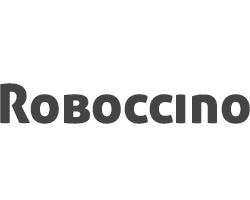2025 Top 10 Prefab House Innovations for Sustainable Living
In recent years, the shift towards sustainable living has gained significant momentum, prompting innovative solutions that address environmental concerns while providing comfort and functionality in housing. One of the most groundbreaking developments in this domain is the rise of the Prefab House, or prefabricated housing, which boasts numerous advantages in terms of sustainability, efficiency, and design flexibility. As we look toward 2025, it becomes essential to explore the top innovations in prefab housing that are set to redefine our living environments.
This article delves into the most cutting-edge advancements in prefab house technology and design, highlighting how these innovations contribute to a more sustainable future. From energy-efficient materials and smart home integration to modular designs that minimize waste, the advancements are not only practical but also pivotal in promoting eco-friendly living. The convergence of technology and sustainable design principles ensures that prefab houses are emerging as a viable alternative to traditional construction methods.
As we examine the top ten innovations in prefab housing, we will uncover how these modern solutions empower individuals and communities to create homes that are not just structures but are also harmoniously integrated with their surroundings. The future of housing is here, and the prefab house stands at the forefront of this exciting transformation, offering a glimpse into a more sustainable and responsible way of living.
Cutting-Edge Eco-Friendly Materials Revolutionizing Prefab Homes
The future of sustainable living is being reshaped by innovative prefab house designs that utilize cutting-edge eco-friendly materials. These materials not only reduce the environmental impact of construction but also enhance the efficiency and longevity of homes. For instance, advancements in recycled metals and sustainably sourced timber are setting new standards in durability while lowering the carbon footprint associated with traditional building materials. Prefab homes now incorporate high-performance insulation made from industrial by-products, which contributes to energy savings and improved indoor air quality.
In addition, the integration of bioplastics and eco-composites is revolutionizing both the aesthetic and functional aspects of prefab homes. These materials are not only biodegradable but also offer excellent thermal properties. Furthermore, the application of photovoltaic panels and green roofing systems ensures that these homes are not only self-sustaining but also contribute positively to the environment. The innovative use of such leading-edge materials makes prefab homes an attractive option for eco-conscious consumers looking to invest in a sustainable future.
Smart Home Technology Enhancements for Sustainable Living
As the world shifts towards sustainable living, smart home technology is at the forefront of prefab house innovations. These advancements not only enhance the comfort and convenience for residents but also significantly reduce energy consumption. For instance, smart thermostats can learn occupants' patterns, optimizing heating and cooling based on actual usage, which leads to substantial energy savings. Additionally, smart lighting systems equipped with sensors can adjust brightness according to the time of day, minimizing electricity waste while maximizing natural light.
Furthermore, integration of renewable energy solutions like solar panels with smart grid technologies sets a new standard for eco-friendly living. Smart homes have the ability to monitor energy production and consumption in real-time, allowing homeowners to make informed decisions about their energy use. By harnessing automated systems that manage everything from appliances to security, these innovations not only contribute to a lower carbon footprint but also facilitate a more sustainable lifestyle that is aligned with modern technological advancements.
2025 Top 10 Prefab House Innovations for Sustainable Living
| Innovation | Description | Benefits | Impact on Sustainability |
|---|---|---|---|
| Solar Roof Panels | High-efficiency panels integrated into the roofing. | Reduces electricity bills and carbon footprint. | Generates clean energy for the home. |
| Smart HVAC Systems | Heating and cooling systems with AI controls. | Increases energy efficiency and comfort. | Reduces energy consumption significantly. |
| Rainwater Harvesting Systems | Systems for collecting and using rainwater. | Decreases water bills and promotes reuse. | Conserves local water resources. |
| Energy-Efficient Windows | Windows designed to minimize heat loss. | Enhanced thermal comfort and energy savings. | Lowers heating and cooling demands. |
| Sustainable Building Materials | Materials sourced from renewable processes. | Reduced environmental impact. | Supports circular economy practices. |
| Smart Water Management Systems | Automated systems for monitoring water use. | Prevents water wastage and leaks. | Promotes sustainable water usage. |
| Home Automation Systems | Integrated systems for managing home utilities. | Improved efficiency and convenience. | Reduces overall energy consumption. |
| Green Roofs | Vegetated roofing systems that manage stormwater. | Insulates the building and promotes biodiversity. | Helps to mitigate urban heat island effect. |
| Waste Management Solutions | Systems for composting and recycling waste. | Minimizes landfill waste and promotes recycling. | Supports sustainable waste reduction practices. |
| Modular Construction Techniques | Flexible building methods using prefabricated elements. | Reduces construction time and waste. | Enhances resource efficiency in construction. |
Innovative Energy Solutions in Prefab House Designs
In the realm of sustainable living, the integration of innovative energy solutions in prefab house designs is transforming the way we conceive residential architecture. The latest data from the EcoHome 2023 report reveals that energy-efficient prefab homes can reduce energy consumption by up to 50% compared to traditional houses. This is achieved through advanced insulation materials, energy-efficient appliances, and the strategic placement of windows for optimal natural lighting. Such designs not only minimize reliance on non-renewable energy sources but also enhance the overall living experience by promoting a healthier indoor environment.
Additionally, renewable energy technologies are becoming increasingly commonplace within prefab house innovations. Solar panel installations and energy storage systems are among the key features that make these homes self-sustaining. According to the U.S. Department of Energy, homes equipped with solar energy systems can yield savings of over $1,500 annually on electricity bills, reinforcing the economic viability of adopting prefab constructions. As urban challenges grow, these innovative solutions are indeed paving the way for a sustainable, cost-effective, and ecologically responsible future in residential living.
Modular Design Trends Promoting Flexibility and Efficiency
The 2025 landscape for prefab house innovations reveals significant trends in modular design that cater to flexibility and efficiency, essential components for sustainable living. As urban areas expand, the demand for efficient housing solutions rises. This is evident from projections estimating the global household storage service market to reach approximately $7.658 billion in 2025, soaring to $71.878 billion by 2033, with a staggering compound annual growth rate of 32.3%. Such growth highlights a pivotal shift toward modular systems, which not only optimize space but also cater to the dynamic lifestyles of modern inhabitants.
Moreover, the integration of advanced technologies into prefab homes exemplifies this trend. The rise of intelligent robotics and digital twin technologies in the construction of smart cities reflects an increasing overlap between traditional home building methods and innovative, sustainable practices. Consequently, modular designs now emphasize adaptability to various living conditions while enhancing environmental performance. As housing demands evolve, embracing these modular trends and integrating smart solutions is not just beneficial—it is essential for future-proofing our living environments against the backdrop of rapid urbanization and technological advancement.
Biophilic Design Elements Enhancing Indoor Sustainability
Biophilic design is transforming prefab houses into vibrant, sustainable living spaces that connect residents with nature. By incorporating natural elements such as living walls, skylights, and large windows, these homes promote a healthier indoor environment. The use of organic materials, such as reclaimed wood and natural stone, not only enhances aesthetics but also reduces the carbon footprint of construction. Biophilic design encourages occupants to engage with their surroundings, fostering a sense of well-being and tranquility.
In 2025, innovations in biophilic design will take center stage in prefab housing. Smart technology will play a crucial role in optimizing natural light and airflow, further minimizing reliance on artificial resources. Features like green roofs and integrated gardens will not only provide insulation but also support local biodiversity. These advancements reflect a growing recognition of the crucial link between a home’s design and the well-being of its inhabitants, making sustainable living not just an aspiration but a reality for many.

